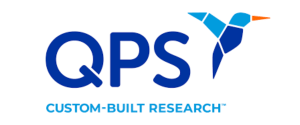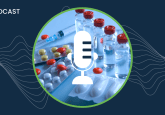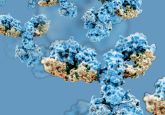Bridging science and safety: exploring toxicology studies and regulatory requirements
In our latest podcast episode, Charlene Chen (QPS; Taipei, Taiwan) delves into all things toxicology, discussing the factors that influence species selection, how to mitigate off-target toxicity and how regulatory requirements impact toxicology study design. Charlene also shares some recent successful compounds that have progressed to clinical trial testing, commenting on their status in the drug development pipeline.
About the speaker:
 Charlene Chen
Charlene Chen
Deputy Manager, Toxicology Center Taiwan
QPS Taiwan (Taipei, Taiwan)
Dr Charlene Chen is a Deputy Manager for the QPS Toxicology Center in Taiwan. She has 20+ years’ experience in preclinical development surrounding toxicology, PK, PD, pharmacology, immunology, efficacy models and bioavailability in numerous therapeutic areas. She also has experience in the safety evaluation of cosmetic materials including genotoxicity, skin/eye irritation, sensitization, topical and dermal toxicology studies, PDE/OEL establishment and risk assessment. Additionally, Dr Chen serves as an ad hoc specialist for the Assessment and Accreditation of Laboratory Animal Care, as an Adjunct Professor for National Taiwan University and is a member of the Society of Toxicology and the American College of Toxicology.
Podcast transcript
[00:09] Emma Hall: Hello and welcome to our podcast episode exploring toxicology studies, sponsored by QPS. I’m your host, Emma Hall, and today I’m joined by Charlene Chen, Deputy General Manager for the QPS Toxicology Center in Taiwan. Charlene has years of experience in pre-clinical development surrounding toxicology, PK, PD, efficacy models and bioavailability in numerous therapeutic areas. She also has experience in safety pharmacology assessment, genetic toxicology and reproductive toxicology. Thank you very much for joining us Charlene.
[00:45] Charlene Chen: Thank you.
[00:47] Emma Hall: To kick us off, could you introduce yourself and your role at QPS?
[00:51] Charlene Chen: Yes, I’m Charlene Chen. I’m a board-certified toxicologist and I have been in this field for more than 20 years. As Emma just mentioned, I have been involved in a lot of different kinds of pre-clinical studies and some projects [have] already been successfully submitted to the US FDA or EMA or another country. Currently in my role at QPS I am responsible for the Toxicology Center located in Taiwan.
[01:24] Emma Hall: Great. Thank you so much, Charlene. The first question we have is, what factors influence species selection in toxicology studies?
[01:34] Charlene Chen: This is a very important question. Before we start a toxicology study, the choice of relevant species is always the first question we need to address. So how [do we] define a relevant species for a toxicology study? We can [select] the test article [based on] metabolism, mode of action, or the modality of the test article itself.
For metabolism, we can get the data from ADME results such as from in vitro and in vivo metabolite ID profiling, from which you can select the most suitable pre-clinical species for toxicology studies. In some dermal studies, the preference is to use mini pigs or rabbits as the toxicology species because the skin texture is similar to human skin texture. So, there are a lot of factors that can affect the species selected for toxicology studies.
[02:45] Emma Hall: Thank you so much. How do you assess the potential for off-target toxicity?
[02:50] Charlene Chen: For off-target, usually we can use the so-called general toxicology or mammalian toxicology studies to address this kind of target. For general toxicology studies, the study design is to evaluate the whole panel of potential toxicity, either as expected or off-target. So there is no bias for the toxicology study design.
We [would] examine the whole panel of endpoints such as body weight, clinical observation [and] clinical pathology. After animal sacrifice, we will [perform] the histopathology evaluation. So, there will be no bias [like] pharmacology or only checking certain parameters. In general toxicology studies, we will evaluate the whole panel of endpoints and will most likely [assess] general toxicology in two different species – rodents and non-rodents. Of course, these both have to be relevant species.
[03:55] Emma Hall: Yes, definitely. What strategies can mitigate the risk of off-target toxicity?
[04:01] Charlene Chen: There are several ways to lower the risk of off-target [toxicity]. Usually, we will have some idea [during] development in the pharmacology stage. You will know [if] there are so-called target organs, but [also] some possible off-target organs. When we [perform] the pilot toxicology study, we will also have some ideas [of off-target toxicity] other than the pharmacological effect. [We would ask] ‘is there also anything to be found or noted during the toxicology pilot study, such as the histopathology data or clinical pathology data?’ We have a lot of examples. Maybe later I can share some of my experience with you.
[04:52] Emma Hall: Thank you so much. If we move on to more of a regulatory standpoint, how do regulatory requirements, for example from the FDA, the EMA and ICH, impact toxicology study design?
[05:06] Charlene Chen: In general, I think nowadays regulatory agencies all follow similar guidance. Back in the old days there were several different requirements, especially in Asia and in Europe, that were different from the US FDA. I think things have become more harmonized since around 10 years ago. So in general, it’s pretty similar. However, there are still some minor differences, such as the number of animals. Do you need a TK (toxokinetic) group – regular group – or can you use the toxicology animals [for] TK blood sampling. With that, we will always check with the sponsor if they plan to submit the package to the EMA or to the US FDA as the first regulatory agency, and then we try to design the study to cover all these different requirements from different regulatory agencies.
[06:06] Emma Hall: Could I ask a follow-up question? What other regulatory requirements in Asia differ from the US?
[06:13] Charlene Chen: For example, if you are [not] going to submit to China, you don’t require the recovery group for middle or low doses. But if you plan to submit to China, then middle or low dose recovery group is required. This is just an example, there are some others. Of course, it also depends on the test article or depends on the possible toxicology findings, [which] will all impact the study design. So that’s something we always want to discuss with the sponsor before we confirm or finalize the protocol.
[06:54] Emma Hall: It’s really interesting about the many [regulatory] differences. Are you able to share any recent toxicity studies for successful compounds that have progressed to clinical trial testing?
[07:06] Charlene Chen: Yes, we have done a lot over the past year, but I think there is one example I would like to share. This is a project indicated for Alzheimer’s treatment, and we have been working with this sponsor for a very long time. At the beginning, the sponsors tried to resolve the issues to increase the exposure of the test article. So they tried tons of formulations, and we started to work with them to use a PK study to check the exposure. After 1.5 years, they finally [obtained] a very good formulation—or had an acceptable formulation to support enough exposure, and then we started to work with them.
However, during the toxicology pilot studies, we found there was some liver toxicity in the animals. And the liver toxicity was only noted in the non-rodents. So, we worked with the sponsor to adjust the dose level. And we also worked with other outside pathologists to contact peer review to make sure it was really liver toxicity. And during the GLP toxicology study, we also found some emesis in dogs, which can also impact the PK data.
So, we adjusted the feeding plan to minimize the emesis in the animals, as well as changed the dosing plan in the safety pharmacology [study]. As you know, [assessing] safety pharmacology usually [involves] only [giving a] dose to the animal once and evaluating the ECG or respiratory [response]. Since the animal will vomit after dosing, we train the dogs several times for dosing to lower the frequency of emesis, from which we can get better data.
So, the sponsor submitted [the treatment] to the US FDA and got IND approval and now the clinical trial has started. And right now we are also working with them for a long-term toxicology study to support their upcoming Phase 2 clinical trial. So I think this is a very good example [of a successful compound that has progressed to clinical trial testing]. We [worked on] on a joint development [process] with the sponsor at the early stage, so we could work with them to successfully push the project into R&D and clinical trials.
[09:51] Emma Hall: That’s amazing. So it’s not yet in Phase 1 trials yet or anything, but you’re hoping that it will get IND approval?
[10:00] Charlene Chen: It already got IND approval. And they are planning to start Phase 2 in the year 2026, or later this year. That’s why we are working on the [current] study. I think the data of the [current] study will be ready in Q3 this year.
[10:23] Emma Hall: Very exciting. Thank you so much for sharing your experience and insights with us, Charlene. It sounds very exciting and like you have a lot to look forward to in Q3 this year especially. It was a pleasure to speak with you today. Thank you so much for joining us.
Disclaimer: The opinions expressed in this interview are those of the author and do not necessarily reflect the views of Bioanalysis Zone or Taylor & Francis Group.







